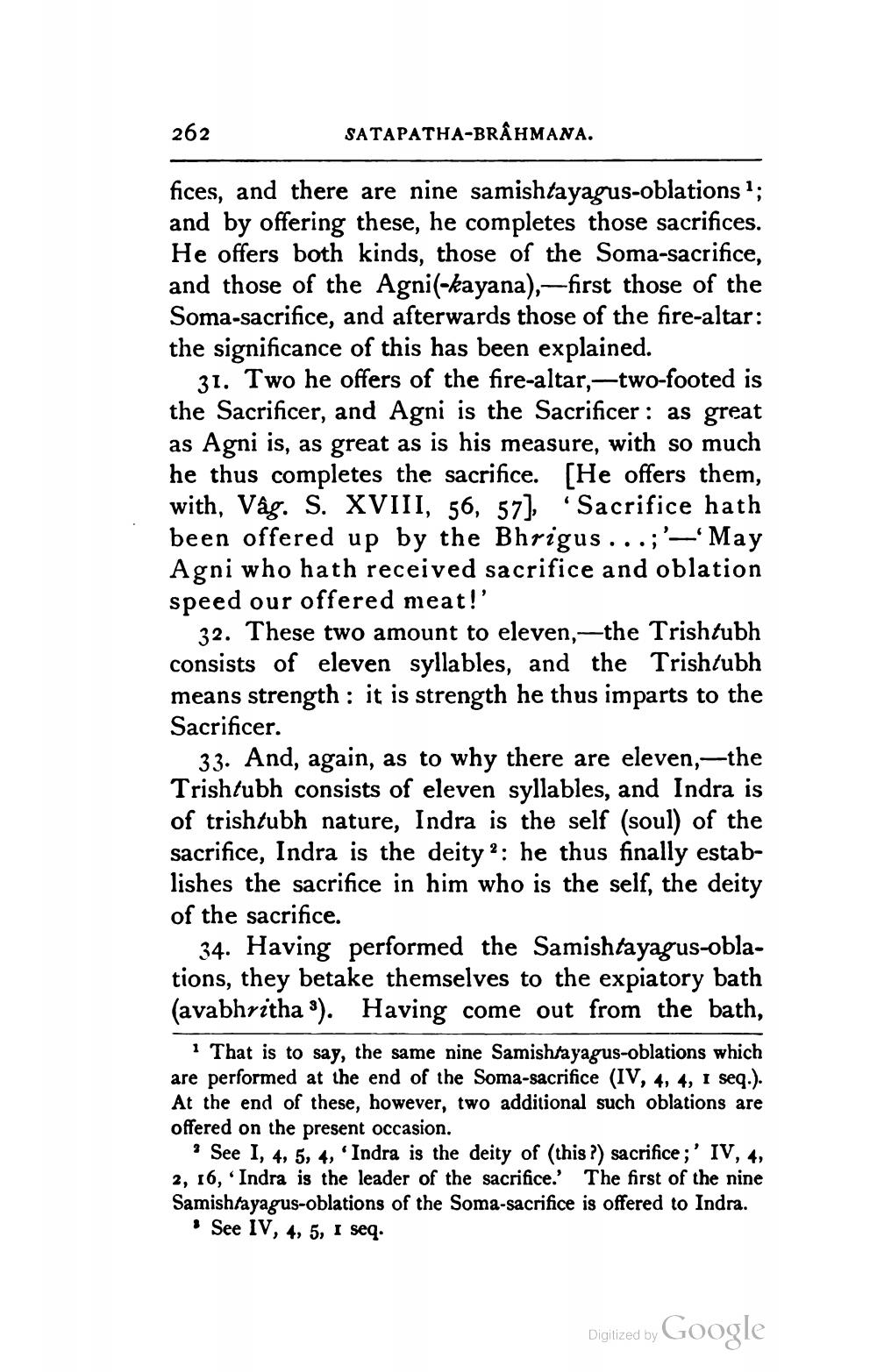________________
262
SATAPATHA-BRAHMANA.
fices, and there are nine samishtayagus-oblations ?; and by offering these, he completes those sacrifices. He offers both kinds, those of the Soma-sacrifice, and those of the Agni(-kayana),-first those of the Soma-sacrifice, and afterwards those of the fire-altar: the significance of this has been explained.
31. Two he offers of the fire-altar,-two-footed is the Sacrificer, and Agni is the Sacrificer: as great as Agni is, as great as is his measure, with so much he thus completes the sacrifice. (He offers them, with, Vâg. S. XVIII, 56, 57), "Sacrifice hath been offered up by the Bhrigus ...;'-May Agni who hath received sacrifice and oblation speed our offered meat!'
32. These two amount to eleven,—the Trishtubh consists of eleven syllables, and the Trishtubh means strength: it is strength he thus imparts to the Sacrificer.
33. And, again, as to why there are eleven,—the Trishtubh consists of eleven syllables, and Indra is of trishtubh nature, Indra is the self (soul) of the sacrifice, Indra is the deity ?: he thus finally establishes the sacrifice in him who is the self, the deity of the sacrifice.
34. Having performed the Samishtayagus-oblations, they betake themselves to the expiatory bath (avabhritha 3). Having come out from the bath,
1 That is to say, the same nine Samishtayagus-oblations which are performed at the end of the Soma-sacrifice (IV, 4, 4, I seq.). At the end of these, however, two additional such oblations are offered on the present occasion.
• See I, 4, 5, 4, 'Indra is the deity of (this ?) sacrifice;' IV, 4, 2, 16, Indra is the leader of the sacrifice. The first of the nine Samishtaya gus-oblations of the Soma-sacrifice is offered to Indra.
See IV, 4, 5, I seq.
Digitized by Google




